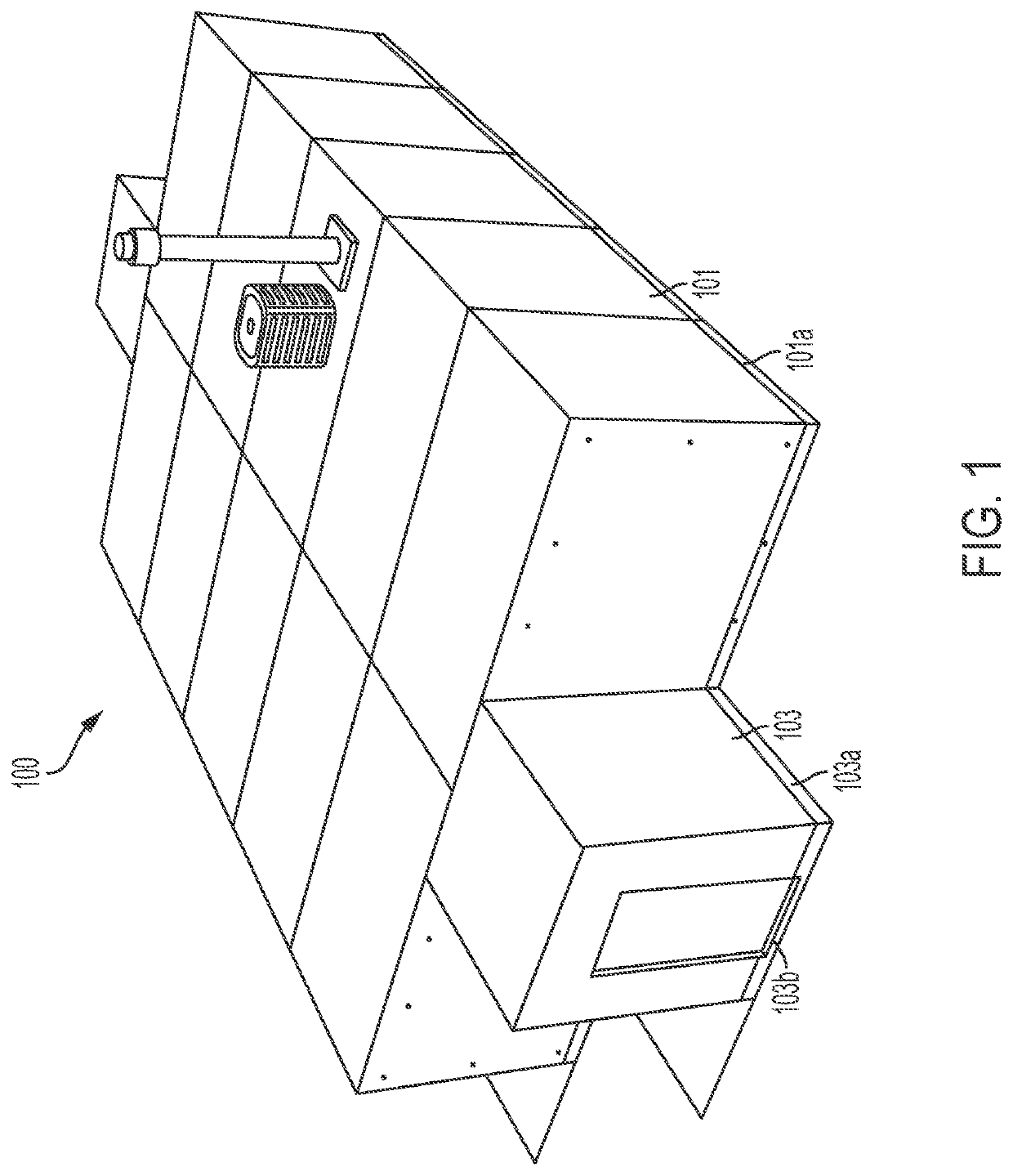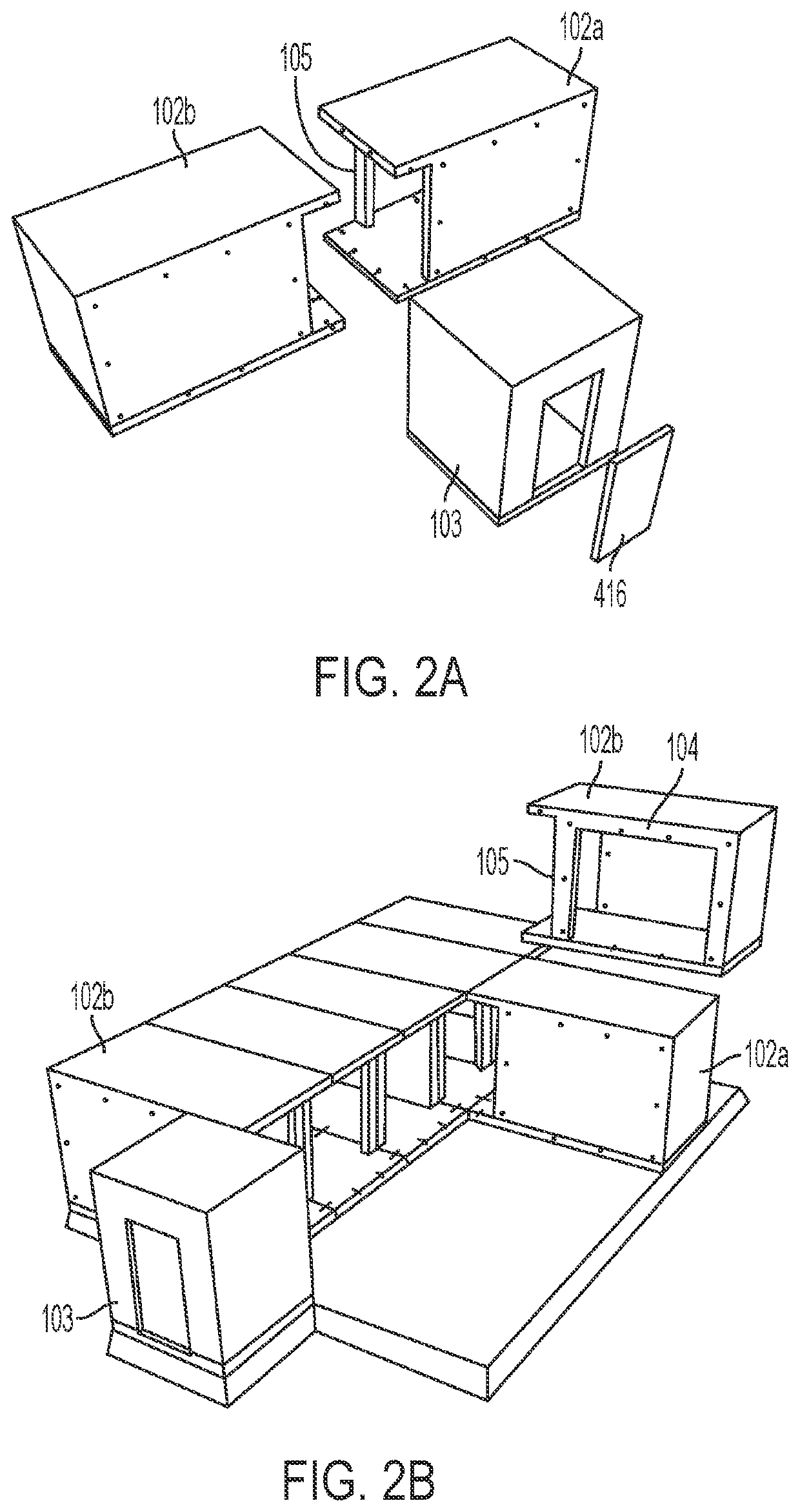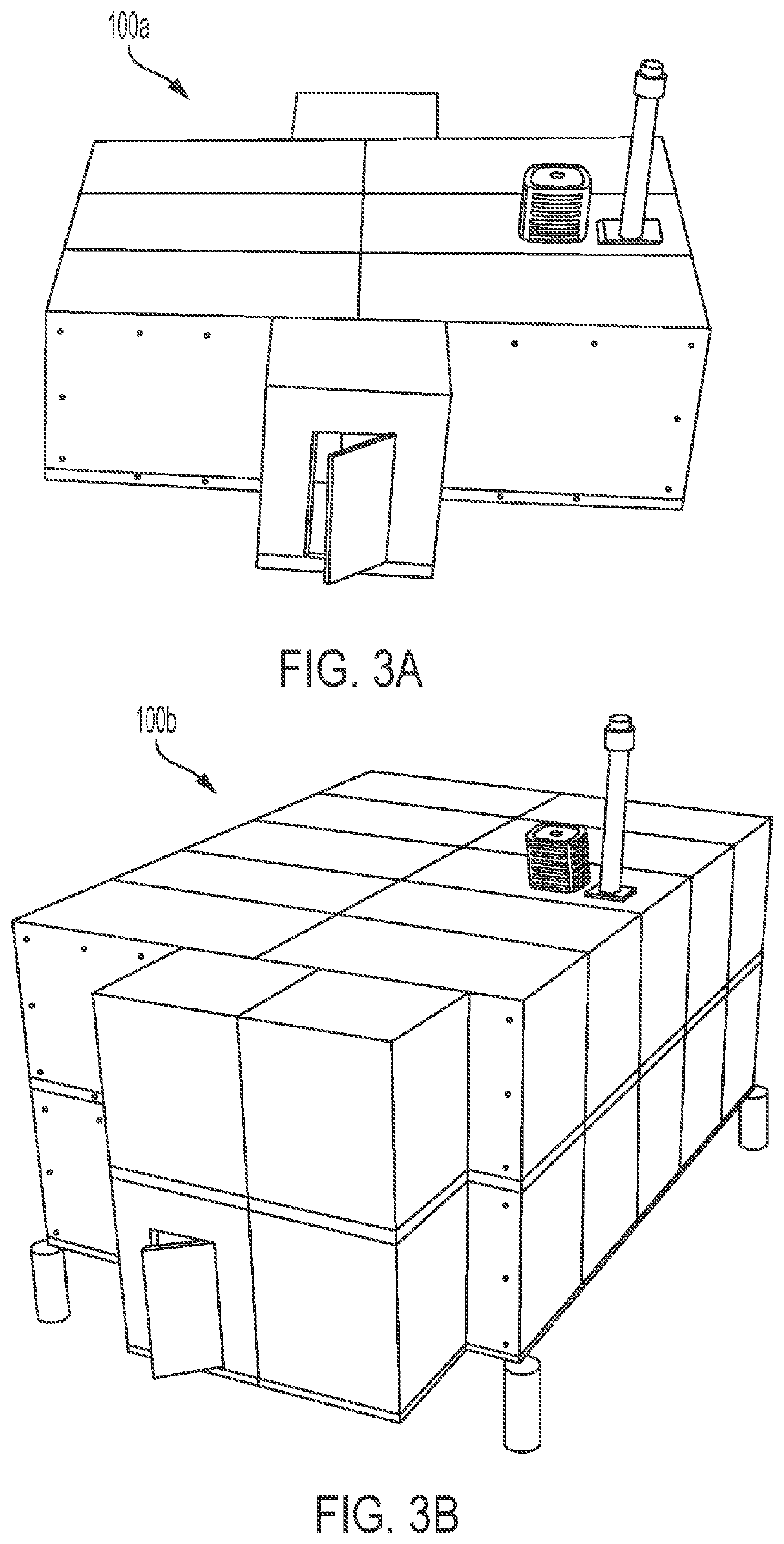Fragment-, overpressure-, radiation-, and toxic-resistant emergency safety shelter
a technology of radiation-resistant and toxic-resistant shelters, which is applied in the direction of gas-proof doors, heating types, applications, etc., can solve the problems of unintentional release of hazardous materials, increased risk of building occupants' death or loss of critical equipment function, and significant damage to the structur
- Summary
- Abstract
- Description
- Claims
- Application Information
AI Technical Summary
Benefits of technology
Problems solved by technology
Method used
Image
Examples
Embodiment Construction
[0035]In the following detailed description, numerous specific details are set forth by way of examples in order to provide a thorough understanding of the relevant teachings. However, it should be apparent to those skilled in the art that the present teachings may be practiced without such details. In other instances, well known methods, procedures, components, and / or circuitry have been described at a relatively high-level, without detail, in order to avoid unnecessarily obscuring aspects of the present teachings.
[0036]The various structures and techniques disclosed herein relate to providing shelter from fragment, overpressure, radiation (e.g., including thermal radiation), and toxic hazards through a resistant emergency safety shelter building system. The building system can use building components that are manufactured offsite and transported to an installation site for final assembly, with the assembly being performed such that the building offers resistance to a full spectrum...
PUM
 Login to View More
Login to View More Abstract
Description
Claims
Application Information
 Login to View More
Login to View More - R&D
- Intellectual Property
- Life Sciences
- Materials
- Tech Scout
- Unparalleled Data Quality
- Higher Quality Content
- 60% Fewer Hallucinations
Browse by: Latest US Patents, China's latest patents, Technical Efficacy Thesaurus, Application Domain, Technology Topic, Popular Technical Reports.
© 2025 PatSnap. All rights reserved.Legal|Privacy policy|Modern Slavery Act Transparency Statement|Sitemap|About US| Contact US: help@patsnap.com



